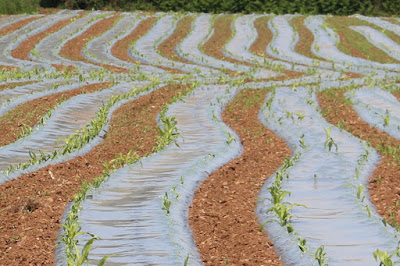 |
| This really is a wonderful time to be out and about. Lots of foxgloves out in the hedgerows. It seems to be a good year for them. |
 |
| Walks at this time of year are always enhanced by the green canopies almost forming tunnels through the trees. |
 |
| Haye Farm, once a mill but now the home of a therapeutic community. The overshot water wheel to the right, fed by a wooden launder, is used to generate power. It is supplemented by an impressive array of solar panels just out of shot. The water itself is taken off the stream by a leat which is about 3 furlongs in length. |
 |
| The ability of trees to produce callouses in response to a foreign body, in this case barbed wire, never ceases to intrigue me. It looks like the callous embraces two trees. |
 |
| A green lane linking Haye Mill to Frogwell. |
 |
| Shades of fresh green on a sycamore tree. |
 |
| Looking north-west towards Bodmin Moor, with Caradon Hill to the far left and Sharpitor to the right. |
 |
| Many of the fields around us are enshrouded with plastic 'cloche' which brings the maize crop on more quickly. Some say it allows harvest a few weeks earlier than with conventional cultivation and gives the chance of another crop being sown before the end. Although it looks pretty stark at the moment, it doesn't take long for the maize to push through and hide the biodegradable.plastic with its growth. |





No comments:
Post a Comment